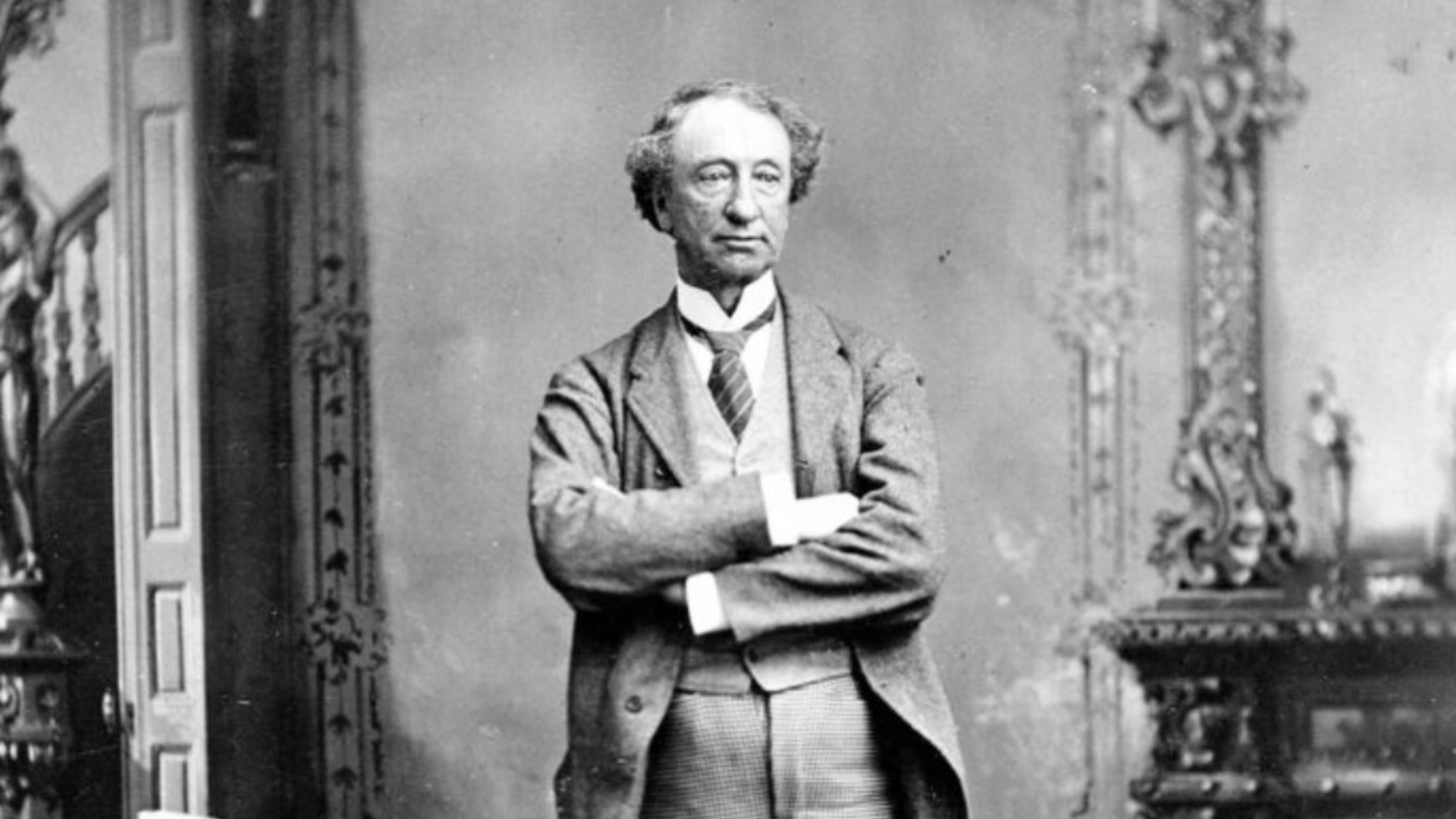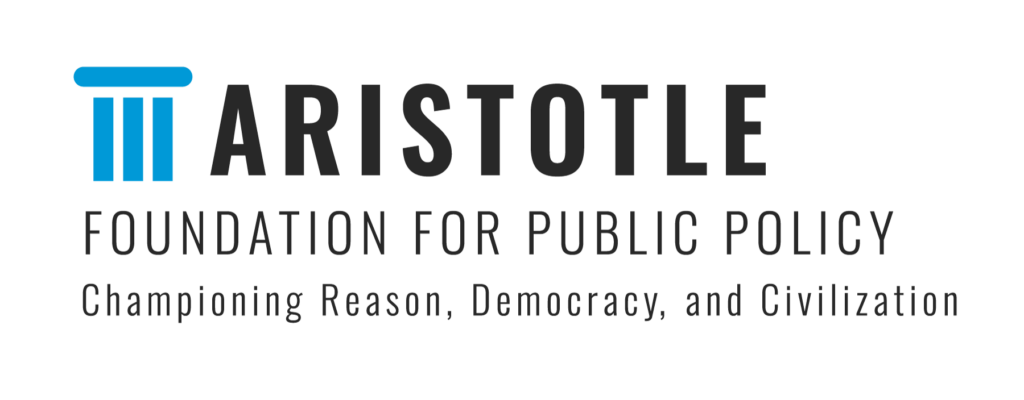
An excerpt from The 1867 Project that also appeared in the National Post.
Given that he died in 1891, the facts of Sir John A. Macdonald’s life are unchangeable. The story of his life, however, has changed dramatically. For most of Canada’s history, Macdonald was considered a nation-builder worthy of celebration and veneration. Today he is a war criminal, at least to hear some tell it. But a proper and balanced consideration of Macdonald’s life reveals that, through his own actions and policies, Canada’s first prime minister was directly and deliberately responsible for saving the lives of untold numbers of Indigenous people. Given the temper of our times, this is not likely to be a popular notion. But that does not make it any less true.
Avoiding war and abiding by treaties
Canada’s treatment of its indigenous people — and Macdonald’s role in it — is best understood in comparison with that of the native population in the United States. The results very much favour Macdonald’s Canada.
By and large, American settlers entered indigenous lands ahead of any formal government presence and without negotiation with the original inhabitants. What treaties were signed between native tribes and the government were often abrogated as soon as it was in the best interest of white settlers to do so.
This process —what might be considered a “settlement first, negotiation second” approach — inevitably led to conflict and war. In 1890, as part of its regular census of the native population, the U.S. Congress requested a calculation of all lives lost in the more than 40 individual wars between Indigenous tribes and American settlers or government troops since signing of the U.S. Constitution in 1789. The government’s best estimate for this hundred-year period put the death toll at 45,000 natives and 20,000 white soldiers and settlers. A more recent academic study using advanced statistical methods raises the native death toll to 60,000.
Standing in stark and — from the Canadian perspective — greatly uplifting contrast to these appalling figures is a companion document to the 1890 U.S. Congress report, concerning the Canadian experience. Significantly, it makes no mention of any death toll arising from “Indian Wars” in this country. This was not an oversight. Since the British conquest of New France in 1761, there were no significant wars in what is now Canada prior to the Riel Rebellion of 1885. And this solitary armed conflict was a Métis uprising notable for its lack of large-scale native participation; the First Nation death toll from the entire conflagration was no more than a few dozen.
Such a long period of peaceful relations between Indigenous and white populations in Canada was largely the result of British policy that sought to make and keep treaties with native communities. The British approach is best characterized as “negotiation first, settlement second.” As Canada’s first prime minister, Macdonald was extremely proud of this legacy of peaceful co-operation and co-habitation. He was determined to maintain such a policy while overseeing the settlement of Canada’s West.
The creation of the North-West Mounted Police
Another key piece of Macdonald’s plan to avoid white/native conflict in Canada’s new western territory was to create a police force to establish a system of law and order on the Prairies ahead of white settlement, again in contrast to the American experience. The North-West Mounted Police (NWMP), the precursor to today’s Royal Canadian Mounted Police, was meant to deter incursions from the United States and protect the legal rights of both natives and settlers once settlement began. The force’s very existence stands as testimony to the Canadian government’s intention to protect the native population from depredation and genocide.
The design of the NWMP was deeply influenced by a report from Lt. William Francis Butler, a British soldier who toured the Canadian West at Macdonald’s request in 1871. Butler had previously travelled the American Plains and was outraged by the “terrible, heart-sickening deeds of cruelty and rapacious infamy” arising from the American “wars of extinction” waged against Indigenous people. He was determined that Canada should avoid such a disaster. He proposed the creation of a mounted police force and system of travelling magistrates to protect the indigenous population and bring a formal process for justice to the Prairies. Macdonald wholly embraced this vision.
Considering the accusations made against Macdonald today, it is noteworthy that he was criticized in his time for instructing the NWMP not to show favouritism towards white settlers. Rather, he argued, it was their proper role to protect the rights of native and settler alike. Such an enlightened view will no doubt comes as a surprise to his many present-day detractors. But again, it is true. And in doing so, Macdonald undoubtedly saved many more native lives from American-style frontier justice.
Smallpox vaccination
The arrival of smallpox to North America was disastrous for native populations across the continent since they had no natural resistance to this deadly disease. In the 1830s, for example, an epidemic originating in the American West migrated north and killed three quarters of all natives living in the Edmonton area.
Prior to Confederation, the governments of Upper and Lower Canada under the joint leadership of Macdonald and George-Étienne Cartier had organized a vaccination campaign for provincial native populations as part of a comprehensive public health program. This was highly effective and quickly felt.
Once Canada took over the Hudson’s Bay Company lands, smallpox vaccination was gradually expanded to include all native Canadians in the western territories as well. During the Liberal administration of Prime Minister Alexander Mackenzie, Dr. Daniel Hagarty was appointed medical superintendent for the Canadian West and given the huge responsibility of vaccinating the entire indigenous population. This objective was maintained following Macdonald’s return to power in 1878. And it was again tremendously successful. In some native communities, the vaccination rate hit 100 per cent, a remarkable feat that is rarely duplicated today.
Famine relief for natives on the Prairies
The gravest charges against Macdonald’s legacy involve his role in the famine among the indigenous population of the Prairies following the collapse of North America’s buffalo herds in the late 1870s. The claim that Macdonald was responsible for a “state-sponsored attack on Indigenous communities” by denying food relief in order to open the Prairies to white settlement is forcefully made in Clearing the Plains, from University of Saskatchewan historian and notable Macdonald critic James Daschuk.
Perhaps the most stinging indictment comes from Macdonald’s own words. Daschuk twice quotes Macdonald from 1882 saying his government was “doing all we can, by refusing food until the Indians are on the verge of starvation, to reduce the expense.”
In making this statement, Macdonald is responding to criticism of excessive generosity made by the Liberal Opposition during debate on the 1882 budget. The Liberals wanted to spend less on the native file — much less. That damning quotation which while it appears callous and inhumane, is not the whole story. Macdonald made these remarks during debate on the 1882 budget. Liberal MP David Mills was arguing that the $294,524 set aside for “Supplies for destitute Indians,” was excessive and should be lowered. To this Macdonald retorted “When they fall into a state of destitution, we cannot allow them to die for want of food.”
While half rations may sound draconian to modern ears, and is no doubt uncomfortable, it is not a death sentence. Also, keep in mind that no treaty obligated the federal government to provide rations to any natives living off-reserve. Nevertheless, when the famine arrived with unexpected swiftness in 1878, the government reacted as its treaties dictated. Macdonald told the House of Commons that the “absolute failure of the usual food supply of the Indians in the North-West” created the “necessity of a large expenditure in order to save them from absolute starvation.” Natives living on reserves were provided aid, mostly flour and bacon, as per the government’s obligations.
Even Daschuk acknowledges that “Rations kept many from starving.” The reduction for some was meant to encourage those wandering natives to return to their reserves, where the treaties they signed required them to be. Recall that it was this strict and legalistic approach to treaties that distinguished Canada’s native experience from the bloody and arbitrary American version.
In fact, the full exchange reveals a deeper concern for the wellbeing of natives and their treaty rights. In a similar exchange, this one in the 1880 House of Commons debates Macdonald frames the issue as a moral one: “Public sentiment would not allow, and no Government would be worthy of their position, if they allowed the Indians to starve as long as we have the means to feed them. The Government adopted the best means for relieving them. We were obliged to find food for them.”
Macdonald allocated considerable government resources to fulfilling its famine relief duties. In 1878 the federal budget for Indian Affairs was a rather modest $276,000. By the peak of the famine in 1884, this item had grown to $1.1 million, outweighing National Defence by a substantial margin. In fact, this was the largest famine relief program Canada had provided up to that point. That it occurred in the midst of a severe economic recession in Eastern Canada makes its scale all the more impressive.
Residential schools
Residential schools also figure prominently in popular claims that Macdonald was responsible for a “genocide” of Indigenous people. In fact, the first such schools appeared in Canada in 1695, long before Macdonald’s tenure. And their application to western Canada cannot properly be regarded as a government plot to permanently eliminate native culture. Under the seven numbered treaties, the federal government was obligated to build and staff such schools only when requested to do so by native leaders, or, as Treaty Six clearly states, “whenever the Indians of the reserve shall desire it.”
And they clearly did desire it: during Macdonald’s tenure as prime minister no fewer than 185 on-reserve day schools and 20 residential schools were built. This reveals a strong interest among native leaders to have their children given a western-style education, as well as a preference for local over residential schools at this time.
Attendance was entirely voluntary. Although the Progressive movement across North America at this time was pushing governments everywhere to make schooling universally compulsory, Macdonald resisted this for native children. Without parental support, he believed, native education would not succeed. Accordingly, it was left up to native parents to decide whether their offspring should go to school. This policy continued long after Macdonald’s death. As late as 1920, attendance at all native schools in Canada was still entirely voluntary.
A balanced account
Macdonald’s legacy is complicated by the passage of time and changing perspectives. But through careful study of his own words and deeds, as well as the reports and actions of his officials, contemporaries, native chiefs and political opponents, what emerges is a clear and powerful picture of his enlightened view towards Indigenous people and his strong sense of moral purpose. If Macdonald’s story has changed, it is because Canadian society no longer understands its own history.
Greg Piasetzki is a Toronto lawyer and citizen of the Metis Nation of Ontario. This chapter excerpt is from the Aristotle Foundation’s new book, The 1867 Project: Why Canada Should be Cherished—Not Cancelled, edited by Mark Milke.
Like our work? Think more Canadians should see the facts? Please consider making a donation to the Aristotle Foundation.

The logo and text are signs that each alone and in combination are being used as unregistered trademarks owned by the Aristotle Foundation. All rights reserved.
The Aristotle Foundation for Public Policy is a registered Canadian charity. Our charitable number is: 78832 1107 RR0001.
SUBSCRIBE TO OUR NEWSLETTER